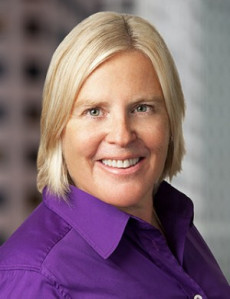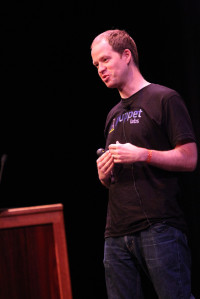How Founders Hire
By True Ventures, August 26, 2014
Hiring can make or break a company. From the first few critical team members to senior leadership further down the road, knowing how and when to hire is a vital skill every Founder must learn. And as we always say at True, the best people to learn from are other Founders. Below, three True Founders weigh in on hiring lessons they’ve learned at every stage of the game.
Chris Anderson, 3D Robotics
We’ve recently experienced two different sides of the hiring process—an acquisition in which we hired the entire team, and an executive search for a CFO.
In July, we acquired another True portfolio company, Sifteo, and of course, any acquisition is a form of hiring, because you are enveloping a new team into your cultural fold. For us, acquiring Sifteo was an incredibly easy hiring experience and the team integrated seamlessly into the 3D Robotics vision, goals and culture. Ultimately, I think it worked well for two reasons:
1) Strong cultural fit. I knew Jeevan and Dave from the True Ventures network and I respected them as Founders and individuals. We had been trading tips for years and, though I didn’t know the rest of the team, I admired what they had done. We felt like peers.
2) Clear focus from day one. We had a big job that needed to be done—a consumer electronics project working with contract manufacturers. The 3DR team had never taken something like this on before, but the Sifteo team were old pros. They were enthusiastic about the product and space, and were able to educate the existing 3DR team on how to accomplish a project like this. It was a perfect way for Sifteo to get on board and get up to speed on our products and industry.
In an acquisition, by and large, a sense of aligned culture and vision of the leaders, a sense of a clear job at hand and a purpose for the rest of the team is what makes it work.
In a very different experience, we just hired the CFO of Microsoft North America to join 3DR as our CFO. This was a classic executive search case where we wanted a world-class CFO and used an executive search firm to help us find one.
The first thing we learned, quite quickly, is that you need to interview your search firm and find the right fit. Initially, we used a firm that was successful conducting searches for several members of our board, but things didn’t quite click with us. We met with a second firm and immediately felt it was a better fit.
You put a lot of trust in your search firm, and at a certain point they know the candidates better than you do. You can’t depend entirely on their advice, but you need their guidance to get you through a complicated search. You need to feel good about them and you need to be able to trust them—almost as much as you would trust the candidate.
Not all search firms specialize in all positions, so make sure you choose the right one. Make sure you see things the same way they do—talk about what kind of companies they think they’d look at to find your candidates. Talk about previous people they’ve found. Talk about payment structure. One firm we interviewed wanted a huge amount of equity in exchange for a search; we just weren’t willing to work that way. Step one is hiring the hiring firm.
Once you have chosen the right search firm, they will start putting candidates in front of you. It’s overwhelming at this stage. There could be anywhere from 10-20 people and you have to meet them all. And what do I know about being a CFO? This is where the second critical point comes in: lean on your network and your board for help. We needed proper finance professionals and people who have hired finance professionals to help us. We leaned heavily on Jim Stewart, True’s CFO, who was fantastic not only with interviewing but with things like compensation.
We also leveraged our board of directors and created a three-person hiring subcommittee. We engaged in weekly calls with the search firm, myself and the subcommittee. Together, we narrowed a list of 12 candidates down to the six who looked the best, and I met with all of them. If I felt that the candidate was strong, they would meet with the board subcommittee. Through these meetings, our weekly reports and thoughts on strengths and weaknesses, we were able to narrow down the candidates to our top choice and a close second and third.
Hiring a CFO was out of my skill set, but by pulling in expert resources like Jim and our board members, we were able to augment our abilities to select the right person. In the end, we were able to close the deal with our current CFO, and he is awesome. He’s been at 3D Robotics only two months, and already he has changed the culture for the better. I absolutely could not have done this on my own. The entire process took only about three months and went incredibly smoothly, thanks to a great search firm and the expertise of our network and board.
Amy Errett, Madison Reed
I live by three mantras when it comes to hiring: 1) Leverage your own network whenever you can; 2) Hire ahead of the curve; 3) People are everything.
We just hired a VP engineering and a CTO at Madison Reed, and both are incredibly accomplished guys. I have always been a big believer that before you even think about using a recruiter, you need to leverage your network, your team’s network and your board. There are certainly opportunities where a using a recruiter would work just fine, or perhaps your internal network isn’t that big yet—in that case, use them. But, if possible, your first course is always your network. I think in every company, at least one Founder or Co-Founder should have the job of networking externally, spotting talent and cultivating relationships.
In the case of our CTO hire at Madison Reed, our chief revenue officer knew him and started a conversation with him about coming on board. Once we hired him, he had a VP engineering with whom he had worked at an earlier startup and was able to recruit him to our team. It’s all about using the network and looking for opportunities.
This is kind of the darker side of hiring, but when you know about another startup that isn’t making it, figure out how their good people could be in play before other people know they’re in play. I am a big believer in hiring ahead of the curve—hire the best people you can hire before you think you need them, and the rest will work itself out.
People could easily say, “Why would Madison Reed—a home hair care company—need a VP engineering and a CTO at the current size of the company?” My response is that we’re a product company that’s technology-enabled. If we can’t get the best people to understand how our category is going to get disrupted by technology, we don’t really have a viable business. With most startups, by the time they know they need someone, it could take six months to find the right candidate and they are already behind. And when you’re behind, you’re typically desperate and you make bad hires—you won’t get the A+ player. If you hire ahead and opportunistically, you’re really taking the time to get to know the person and vet them so you know you can trust them.
People are everything. The product has to be amazing, but at the end of the day the execution is everything.
When we are vetting a new candidate, they must meet tons of people on our team and I meet every candidate. We don’t make any hire unless we feel they are a good cultural fit. Right from the beginning, multiple people meet them and spend time with them, so the candidate knows it’s a good fit and the team has buy-in as well. In the case of our CTO, we got to know each other over a month, and one of the things that was really important was he got to know our board members too. When you’re hiring a relatively senior person, exposing that person to your board members—your biggest supporters—is the absolute best way to show somebody that what you say about your company is true. If your investors are positive about you, a candidate can trust you as an employer.
Luke Kanies, Puppet Labs
The goal at Puppet Labs has always been to make software that people love, and like just about any software company, our people are the determinants of how well we can accomplish our goals.
Since the summer of 2009, Puppet has grown from three people to over three hundred. That’s a lot of growth in a very short period of time, and we’ve had to build new muscles and develop a lot as a company. From how to work to how to communicate to how to hire the right people, we’ve tried, failed, learned and refined. While we haven’t had the luxury of pausing, we have had the benefit of a lot of opportunities to iterate on our approaches, and we’ve been able to use hiring as a major lever for enacting changes we have needed. Thus, hiring has become one of our core strengths.
The most important thing in hiring is to know what you’re hiring for. Hiring an amazing person for a job you don’t really need done is a failure, and it’s a failure of preparation, not execution. I’m convinced you can’t competently hire for a skill that you don’t have yourself, so if you’re hiring for a role you don’t already have and don’t understand well, you have to get outside the building and get a deep understanding of that role from people already doing the job. You must learn at least enough about the role to be able to make a good assessment of someone else’s competence and fit. If you’re creating a new role and you haven’t talked to at least three people who do the job, then you probably don’t understand the job well enough yet.
You have to break the job down beyond a simple title. It’s not enough to say you need someone in marketing. What kind of marketing? Do you need marketing communications or product marketing? If you’re hiring an engineer, is it front end or back? If front end, do you really need a designer? How do you know? You can’t afford to just add capacity; you have to add people who are going to walk in able to solve your biggest problems. If you aren’t doing that, you can’t justify the expense of hiring them.
To get clarity on what you’re looking for, I think it’s important to separate the role definition from the role advertisement. People tend to write job descriptions that are advertising-oriented to attract candidates. Advertising for a role is useful and important, but your advertisement is usually very different from the definition of the role itself. You need a different internal document that defines what you need and draws out what a person who fills this role must be great at and what you want them to accomplish. That way your team doesn’t let you get away with a vague but attractive advertisement.
If you’re still describing ideal candidates in terms of roles they’ve had and activities they’ve performed, I don’t think you or your team sufficiently understand the role you’re hiring for, so it’s hard to get the right person. Instead of thinking in terms of experience and activities, I recommend thinking in terms of the outcomes you’re looking for, and the skills the candidates should have. For instance, instead of saying a salesperson “must spend X hours a day talking to potential customers” (an activity), describe success in terms of “must sell X dollars a year” (an outcome). Fundamentally, you wouldn’t call the salesperson effective unless s/he delivers revenue.
Similarly with skills, too many companies confuse experience with what that experience should have taught someone. Ok, you want someone with an MBA, but why? Can you describe the skills they should have learned from an MBA? If not, how do you know they need an MBA? If you’re looking for someone who has X years in a specific role, what should they have learned in that time? Fundamentally, it’s more productive to focus on the skills someone has learned rather than the jobs they have held.
Lastly, there’s more to a job than the functional skills someone needs. There are multiple kinds of great engineers. You could have a back-end engineer who excels at stability and is paranoid about uptime, where another excels at iteration and getting to a fast answer. Which one do you need? Which one fits into your company? It’s not enough to know “she’s a great engineer;” you need to know she’s great in a way that’s compatible with how you want to work. If you’re hiring a salesperson, do you want an elephant hunter or a transactional person? Know what you want up front, and learn how to interview for those behaviors.
In the early days of Puppet, I found that I’d hired a few highly competent people with whom I couldn’t work well. They had the functional skillset, but I screwed up because I didn’t know how to do behavioral hiring. The culture of the company wasn’t defined, so my ability to know what I wanted people to do was limited. To fix this, I began interviewing candidates using questions that allowed me to reject people for reasons unrelated to the core job skills. This eventually led us to talk about culture, and to learn behavioral interviewing in the company.
Cultural compatibility is not simply, “we like the same kind of music.” It is “we solve problems in the same way.” Ideally you have both, but the latter is more important. Too many companies confuse personal compatibility with work-style compatibility. I’d always rather have someone who I worked really well with than someone who I couldn’t work well with but I really enjoy hanging out with.
Every single hire you ever make is a compromise between quality, time and risk. In the early days, compromise more on skillset and less on cultural fit. Later, when your culture is really well defined, you can afford to make fewer compromises and focus more on skill. You can teach culture in most cases, but in the early days, every hire directly affects your culture. You have to protect that more in the beginning.
You won’t be perfect, so constant learning is the biggest thing. When things don’t work out, instead of focusing too much energy on being discouraged, figure out how you can do better next time. This stuff is hard, but there are plenty of opportunities for success and improvement.




